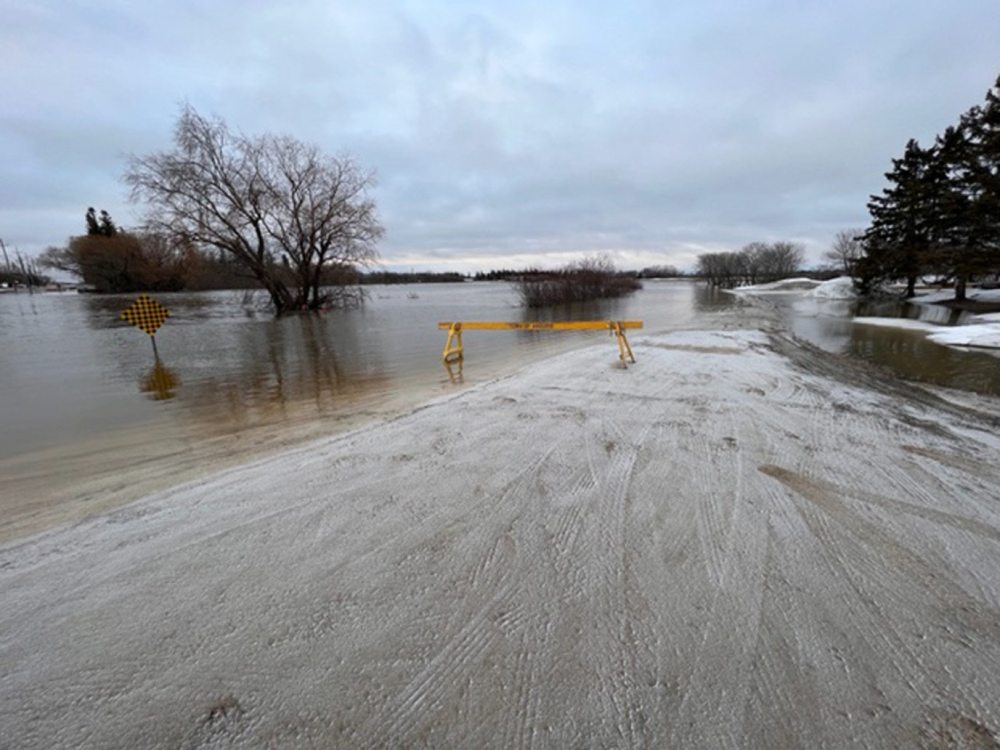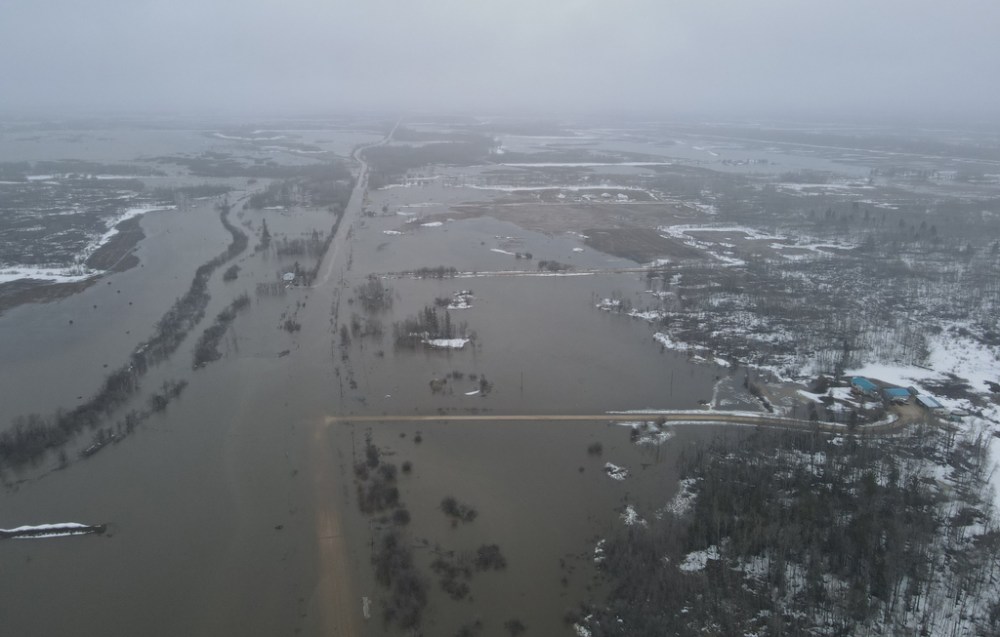Peguis residents flee rising water First Nation’s chief asks Ottawa for military help; 18 other Manitoba communities under states of emergency
Read this article for free:
or
Already have an account? Log in here »
To continue reading, please subscribe:
Monthly Digital Subscription
$0 for the first 4 weeks*
- Enjoy unlimited reading on winnipegfreepress.com
- Read the E-Edition, our digital replica newspaper
- Access News Break, our award-winning app
- Play interactive puzzles
*No charge for 4 weeks then price increases to the regular rate of $19.00 plus GST every four weeks. Offer available to new and qualified returning subscribers only. Cancel any time.
Monthly Digital Subscription
$4.75/week*
- Enjoy unlimited reading on winnipegfreepress.com
- Read the E-Edition, our digital replica newspaper
- Access News Break, our award-winning app
- Play interactive puzzles
*Billed as $19 plus GST every four weeks. Cancel any time.
To continue reading, please subscribe:
Add Free Press access to your Brandon Sun subscription for only an additional
$1 for the first 4 weeks*
*Your next subscription payment will increase by $1.00 and you will be charged $16.99 plus GST for four weeks. After four weeks, your payment will increase to $23.99 plus GST every four weeks.
Read unlimited articles for free today:
or
Already have an account? Log in here »
Hey there, time traveller!
This article was published 02/05/2022 (1322 days ago), so information in it may no longer be current.
More than 1,000 residents of Peguis First Nation have been forced to flee their homes amid severe flooding, with the worst still to come in Manitoba communities combating overflowing streams.
Peguis Chief Glenn Hudson said he was still waiting for a response Monday after asking Ottawa to send in the military to help the overwhelmed First Nation, about 170 kilometres northwest of Winnipeg.
“The water levels are the highest ever that we’ve had in our community,” Hudson said. “People themselves have every emotion, from sadness to anger in terms of having to leave their homes.”
Hudson said he was working with Indigenous Services Canada and the community’s member of Parliament, Niki Ashton, on the request for military aid.
.jpg?w=1000)
Ashton (Churchill—Keewatinook Aski) raised the matter during question period, but Ottawa gave no indication it will send troops to the flood zone.
Vance Badawey, the parliamentary secretary to Indigenous Services Minister Patty Hajdu, said the federal government will work with Peguis “to ensure that they have the resources and supports that they need.”
There appeared to be confusion over the protocol to request military help.
ISC spokesman Matthew Gutsch said the federal government will “carefully review” any requests for military assistance if local resources aren’t sufficient.
He said some homes in Fisher River, Kinonjeoshtegon and Long Plain First Nations have been evacuated due to flooding.
A Canadian Armed Forces spokesperson said the province would have to make a formal request for assistance to Public Safety Canada.
However, a spokesman for the province said it “does not play a part in that request and is not involved in its authorization.”
“ISC, as the entity responsible, needs to make such a request directly to Public Safety Canada,” the spokesperson said. “The military therefore deploys in Manitoba First Nations without a provincial request for assistance. This happened numerous times during COVID.”
Public Safety Canada did not respond to a request for comment.
Communities in peril
Aside from Peguis, states of local emergency have been declared in these 18 municipalities as of Monday afternoon, according to the province:
• RM of Cartier
• RM of Morris
• RM of Ritchot
• RM of Fisher
• RM of Montcalm
• City of Morden
• Town of Winnipeg Beach
• Municipality of Pembina
• Town of Arborg
• RM of Armstrong
• RM of Dufferin
• Municipality of Bifrost-Riverton
• RM of Grey
• RM of Headingley
• RM of Thompson
• RM of West Interlake
• RM of St. Laurent
• RM of Grahamdale
Peguis is under a local state of emergency and a mandatory evacuation order after heavy rain and ice jams caused the Fisher River to spill its banks, said Hudson.
The water level is already higher than the previous record flood of 2011, he said.
Evacuees from Peguis are staying in hotels in Winnipeg, Selkirk and Gimli, but some residents have stayed behind even though their homes have been flooded.
Cindy Sutherland, 46, said she and her husband and their 18-year-old son were pumping water out of their basement, where it was ankle deep, to try to save their house.
“It’s coming in through the basement windows. We tried covering them with sandbags,” said Sutherland. “Outside, you need hip-waders to get to us. You can’t get to us in a regular truck because the water is so deep and the current is so strong. We’re on our own.”
Sutherland assumed they will be forced to leave at some point.
“Once our pumps go out and we run out of gas, our whole house will be underwater,” she said. “It’s a bad situation we’re in right now. It’s like one big lake across most of (Peguis). People have lost their homes already.”
Sutherland said the community was caught off guard.
A post on the First Nation’s Facebook page last Wednesday said river levels were decreasing, and community officials were not expecting a flood.
Hudson said the province’s forecast predicted “low to no flooding,” but ice jams caused the river to back up and inundate part of the community.
”The river is right up. It’s full.” – Arborg Deputy Mayor Ron Johnston
He said staff are working around the clock to set up flood-protection measures such as sandbag dikes and dams that use water-filled tubes, and they’re exhausted.
The Canadian Red Cross in Manitoba is helping residents to ensure they have a place to stay, food and basic essentials such as hygiene products, said spokesman Jason Small.
Many communities in southern and central Manitoba are dealing with overland, river or creek flooding following a series of Colorado low weather systems that hit the region with snow and rain over the past month.

The latest dumped about 40 to 50 millimetres of rain in the Red River Basin over the weekend. Between 30 and 50 millimetres fell across the Interlake and areas east of Lake Winnipeg.
In Arborg, staff and volunteers in the Interlake town have built sandbag dikes at 15 to 20 properties to protect them from the swollen Icelandic River.
“The river is right up. It’s full,” said Deputy Mayor Ron Johnston. “We’re monitoring it right now and filling sandbags and getting ready. Everybody’s pretty secure. We’ve received tremendous help from volunteers.”
As of Monday afternoon, 18 communities, not including Peguis, have declared states of local emergency.
“By and large, this allows them to access private property with flood-protection equipment,” said Johanu Botha, assistant deputy minister responsible for emergency management and Manitoba EMO.
He expects Manitoba to be in “flood response mode” until early June.
The province was preparing to close Highway 75 on the south side of Morris at 8 p.m. Monday to protect the town, after sealing the north side of its ring dike April 29.

South of Winnipeg, provincial flood forecasters expect the Red River to peak between Emerson and the floodway inlet at levels similar to 2009 during the second week of May.
In the Municipality of Ritchot, evacuation notices have been distributed to more than 110 homes, said Mayor Chris Ewen.
He said crews were preparing to close St. Adolphe’s east dike as early as Monday night.
At least 27 homes in the Rural Municipality of Montcalm have been ordered to evacuate, a news release stated.
In the Red River Valley, community ring dikes and most individual properties are protected against 1997 flood levels plus two feet.
The floodway and Portage Diversion remain in operation to reduce water levels in Winnipeg. A flood warning for Sturgeon Creek is still in effect.
The Colorado low that hit over the weekend was the third to dump rain and/or snow on Manitoba in as many weeks.
Forecasters are predicting dry and sunny conditions over the coming days, with daytime highs of about 20 C between Thursday and Saturday in southern Manitoba.
“It should be the warmest week so far this year,” said Scott Kehler, president and chief scientist of Weatherlogics.
However, more rain is expected Friday and Saturday, and another Colorado low could hit Manitoba early next week. The storm’s track and potential rainfall amounts are still unclear.
“Even though most models are forecasting a low-pressure system, it’s not necessarily written in stone just yet,” said Environment Canada meteorologist Sara Hoffman.
chris.kitching@freepress.mb.ca
Twitter: @chriskitching
As a general assignment reporter, Chris covers a little bit of everything for the Free Press.
Our newsroom depends on a growing audience of readers to power our journalism. If you are not a paid reader, please consider becoming a subscriber.
Our newsroom depends on its audience of readers to power our journalism. Thank you for your support.
History
Updated on Monday, May 2, 2022 6:45 PM CDT: Adds video, slideshow and updates story to final version.
Updated on Monday, May 2, 2022 7:04 PM CDT: Removes video, adds pullquote
Updated on Monday, May 2, 2022 7:08 PM CDT: Adds quote from ISC spokesman
Updated on Tuesday, May 3, 2022 7:09 AM CDT: Amends photo cutline







